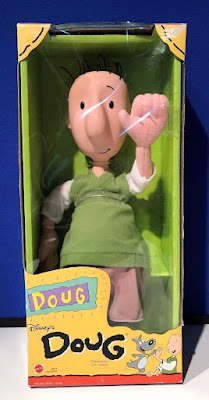Fox Kids (originally known as Fox Children's Network and later as the Fox Kids Network; stylized as FOX KIDS) originated as a programming block that aired on the Fox network from September 8, 1990 to September 7, 2002.
 |
| Fox Kids Logo History |
Fox Kids saw major success with broadcasting the premiere of original material such as Bobby's World (which lasted 7 seasons) and Tom & Jerry Kids (which lasted 5 seasons).
While the block saw the successful premieres of shows like Taz-Mania (eventually lasting 4 seasons), Dog City (3 seasons), Eek! The Cat and X-Men: The Animated Series which each ran for 5 seasons resulting in rating triumphs for Fox Kids from 1991 to 1992.
Fox Kids saw success once again with original content. Mighty Morphin Power Rangers, Where on Earth Is Carmen Sandiego? and Animaniacs all made debuts with the Fox Kids lineup as well as the creation of Spider-Man (lasting 5 seasons) in 1994.
 |
| Kids WB sweepstakes AD |
However, despite the success on September 9, 1995 Kids WB was launched in an attempt to compete against the dominance of Fox Kids. This is where the Saturday Morning Wars began!
Kids WB came in strong with its own original shows: Freakazoid!, Pinky and the Brain and The Sylvester & Tweety Mysteries (lasting 5 seasons). Not to mention the season 3 premiere of Animaniacs. Although Animaniacs made its debut with Fox Kids, after 2 seasons of the show Fox Kids aired Animaniacs reruns for a year. The Warner Siblings (Yakko, Wakko and Dot) switched sides bringing co-stars Pinky and Brain who in turn received their own spin-off for Kids WB premiere. [See Pinky and the Brain host Kids WB preview]
Goosebumps premiered on Fox Kids in October of '95 but neither Fox or WB saw any significant original material being released from either platform for years to come.
 |
| Fox Kids Mix Magazine cover |
1999 ended up being a turning point for Kids WB when issues really came to a head. Fox Kids was starting to struggle due to problems with the ill-fated Fox Family network, the aftermath of the Fox/New World debacle, the ending of network darlings X-Men and Spider-Man: The Animated Series, the growing presence of cable networks such as Nickelodeon and Cartoon Network plus the newly-relaunched Disney Channel and the beginning of Power Rangers seasonal rot.
While Fox Kids suffered, Kids' WB! picked up the broadcasting rights to the Japanese anime series Pokémon, whose surging popularity reached enormous levels. Once the show made the move english audience's it helped Kids' WB! overtake Fox Kids in ratings that year.
Disney's One Saturday Morning block premiered in September 1997 and as well had over threw Fox Kids in ratings. Fox Kids attempted to counter Pokemon's popularity by picking up Digimon, starting with Digimon Adventure. While that show got its fans, it was nowhere near close to being competitive with Pokemon.
By 2001, Fox Kids had only 9% of the age 2-11 TV demographic, a massive drop from its peak of 21% in 1997. Fox Kids was being left behind and could find no way to catch up or stand out in this crowded field. Fox eventually put its children's programming block up for bidding, and 4Kids Entertainment, then-producers of the English dub of Pokémon, purchased the remaining four-hour Saturday time period. Fox Kids maintained a Saturday morning-only schedule until September 7, 2002, a week before it gave the time to 4Kids Entertainment. Fox Kids was replaced by the 4Kids Entertainment-produced FoxBox on September 14, 2002 ending it's 12 year run.
The Fox Kids brand was temporarily retained for international channels in Europe, Israel and Latin America until the Fox Kids library began getting re-branded as Jetix.
Kids WB saw its own demise in 2008 after the shut down of both The WB and UPN to merge them into The CW. On October 2, 2007, The CW announced that it would discontinue the Kids' WB programming block through a decision due to the effects of children's advertising limits and cable competition; the network also announced that it would sell the five-hour Saturday programming slot to 4Kids Entertainment (ironically).The Kids' WB block aired for the final time on May 17, 2008. On May 24, 2008, 4Kids launched The CW4Kids in place of Kids' WB.
Kids WB quickly relaunched as an online network, consisting of five subchannels: Kids' WB! (for WB shows for kids and families), Kids' WB! Jr. (for shows for younger children), Scooby-Doo, Looney Tunes, and two different websites of DC Kids: DC HeroZone.com and DC Beyond.com (for action-oriented animated shows for DC fans).
The site was split into 3 websites on May 17, 2015. These sites are: DCKids.com, LooneyTunes.com and ScoobyDoo.com. All three are grouped into WB Kids Sites. The decision to split the site into three ended, after almost twenty years, the use of the "Kids' WB!" brand name. Also, the sites got new YouTube channels: WB Kids for main Warner Bros. properties (subscribe here), and DC Kids for DC Comics properties (subscribe here). In July 2016, 2 of the 3 websites re-merged into "WBKids GO!". DCKids.com remains active.

















